Olive Young - Busan Nampo Branch [Tax Refund Shop] (올리브영 부산남포)
12.5Km 2024-04-17
64-1, Gwangbok-ro, Jung-gu, Busan
-
Guess - Gwangbok Branch [Tax Refund Shop] (게스 광복)
12.5Km 2024-04-16
5, Gwangbokjungang-ro, Jung-gu, Busan
-
Kakao Friends Busan Flagship Store (카카오프렌즈 부산 플래그십 스토어)
12.5Km 2021-03-17
62, Gwangbok-ro, Jung-gu, Busan
+82-51-256-0815
Kakao Friends Busan Flagship Store features a wide variety of products related to Kakao Friends, popular messenger emojis. Meet Ryan, Muji, Apeach, Frodo, Neo, Tube, Jay-G, Con, and other characters from Kakao through creative home and office supplies, jewelry, stationery, kitchenware, toys, and much more. All products are designed with adorable characters that are sure to brighten your day.
Dolgorae Sundubu (돌고래순두부)
12.5Km 2024-03-15
15, Junggu-ro 40beon-gil, Jung-gu, Busan
+82-51-246-1825
Dolgorae Sundubu is a restaurant in Gukje Market that serves sundubu jjigae (soft bean curd jjigae). It has quite a tradition, dating back to 1982, and still draws lines of visitors at mealtime thanks to its reputation. Sundubu baekban (soft bean curd set menu), comprised of fresh and gentle sundubu jjigae (soft bean curd jjigae) and Jeolla-style side dishes and kimchi, is delicious and nicely presented.
Venus - Gwangbok Branch [Tax Refund Shop] (비너스 광복)
12.5Km 2024-04-23
1, Gwangbok-ro 55beon-gil, Jung-gu, Busan
-
Gwangbok-dong Cultural & Fashion Street (광복로문화패션거리)
12.5Km 2024-03-06
Gwangbok-ro, Jung-gu, Busan
+82-51-253-8253
Gwangbok-dong Cultural & Fashion Street is about 600 m long from the entrance to Gukje Market. The street has historically featured many clothing shops, and it is quite crowded at night or on weekends. Every December, the area also hosts the Busan Christmas Tree Cultural Festival, which turns the street into a pedestrian-only area. There are plenty of good restaurants in the area, which is a great place to feel the vitality and energy of Busan’s youth.
Unsong Tamina (은송타미나)
12.5Km 2020-04-16
26, Gwangbuk-ro 39beon-gil, Jung-gu, Busan
+82-51-246-0786
For over 25 years, Unsong Tamina in Gwangbok-dong Market has served customers with outstanding crafts, antique furniture, and interior design items. These items are reasonably priced, and the store has a wide range of products, making it convenient for customers to fulfill all their interior design needs. The store is particularly popular among Japanese visitors. Purchasing items for delivery is also available over the telephone.
Bosu-dong Book Street Cultural Center(보수동 책방골목 문화관)
12.5Km 2023-01-09
8, Chaekbanggolmok-gil, Jung-gu, Busan
+82-51-743-7650
[The used bookstore that sells memories]
Bosu-dong Book Street has a unique background. It was formed after the independence of Korea (August 15) as a residential area in the empty place where the previous Gukje Market was demolished. Book stores began opening one-by-one and soon the street became known as Bosu-dong Book Street. The street is popular amongst booklovers for their used books as well as new books, and amongst travelers for the street’s unique atmosphere. Many young adults also frequent the street because there are many specialty shops for comic books. Every year, the Bosu-dong Culture Festival takes place and visitors can participate in events such as, make-your-own book cover, make-your-own book, and so on. The festival not only gives an opportunity to learn about the history of Bosu-dong Book Street, but have a good time as well.
Halmae Gaya Milmyeon (할매가야밀면)
12.5Km 2024-03-20
56-14, Gwangbok-ro, Jung-gu, Busan
+82-51-246-3314
Halmae Gaya Milmyeon is a restaurant near BIFF Square that serves milmyeon (wheat noodles). Milmyeon (wheat noodles), a folk dish of Busan, refers to noodles made with starch and flour. The yellowish noodles are chewy and plain in taste, perfect as accompaniments to the chilled clear soup with a sheet of ice on top. Nearby tourist sites include Gukje Market and Jagalchi Market.
ET Land - Mega Mart Gijang [Tax Refund Shop] (전자랜드 메가마트기장)
12.5Km 2024-04-22
673, Gijang-daero, Ilgwang-eup, Gijang-gun, Busan
-
![Olive Young - Busan Nampo Branch [Tax Refund Shop] (올리브영 부산남포)](http://tong.visitkorea.or.kr/cms/resource/56/2885856_image2_1.jpg)
![Guess - Gwangbok Branch [Tax Refund Shop] (게스 광복)](http://tong.visitkorea.or.kr/cms/resource/94/2885794_image2_1.jpg)
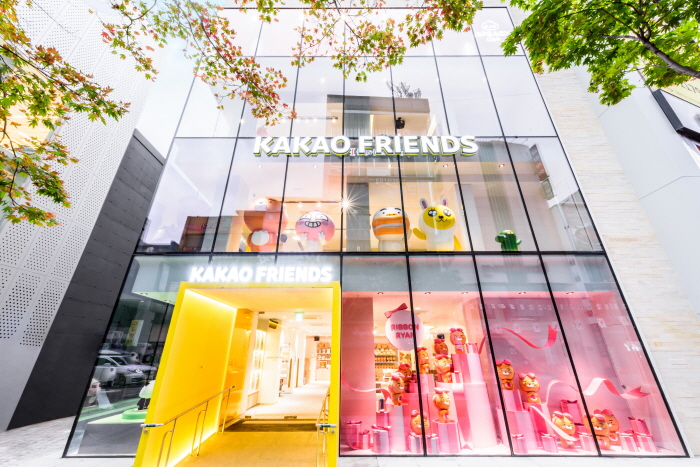

![Venus - Gwangbok Branch [Tax Refund Shop] (비너스 광복)](http://tong.visitkorea.or.kr/cms/resource/04/2888704_image2_1.jpg)
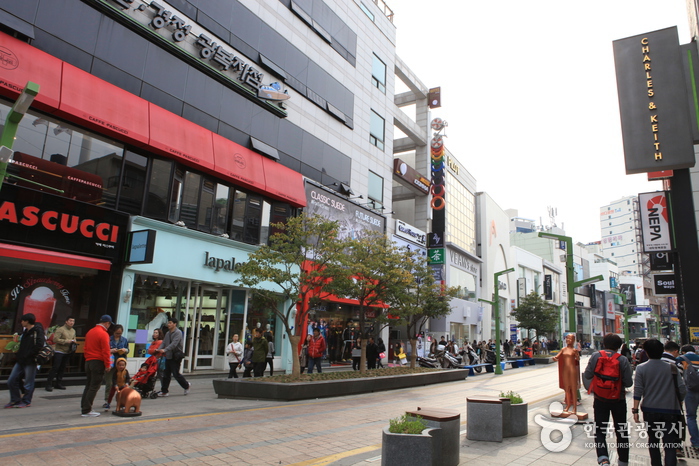
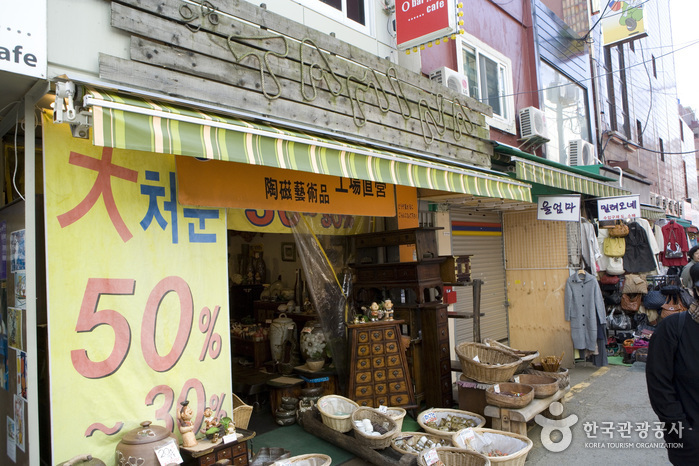
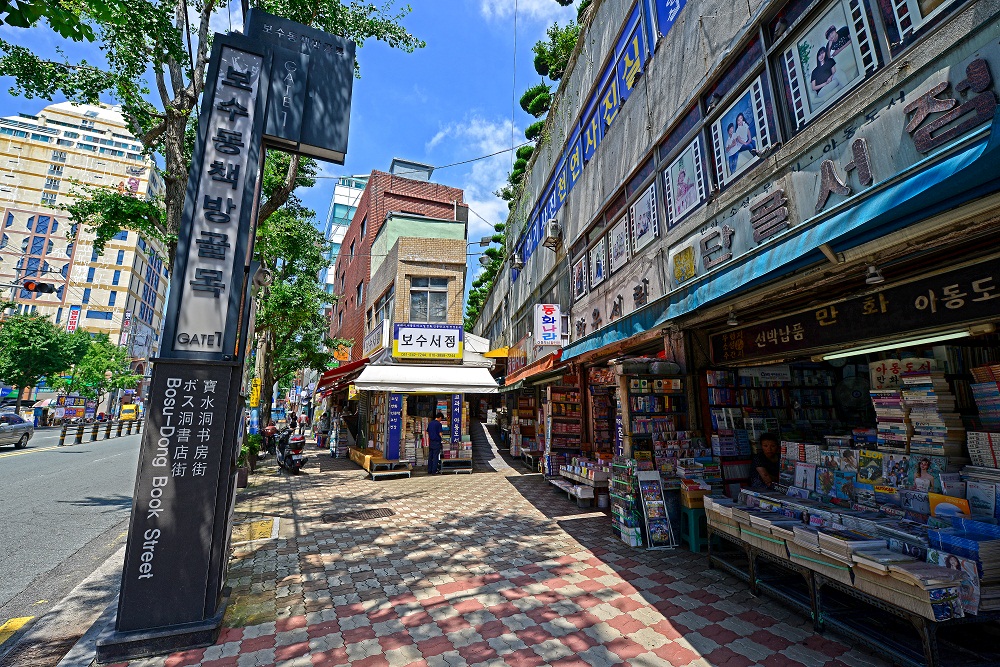
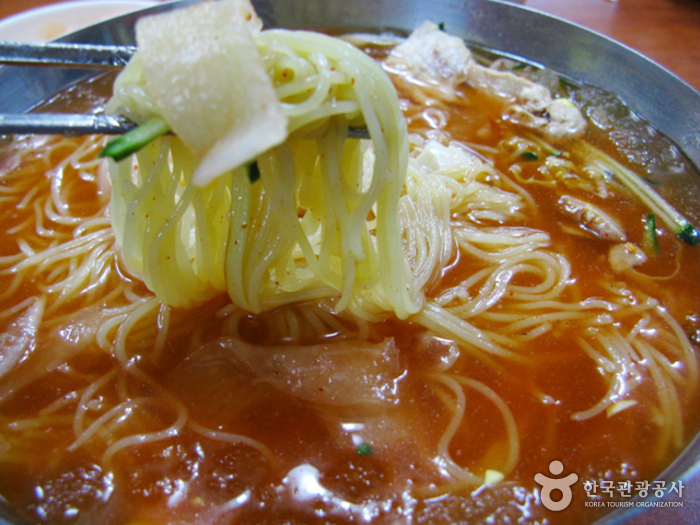
![ET Land - Mega Mart Gijang [Tax Refund Shop] (전자랜드 메가마트기장)](http://tong.visitkorea.or.kr/cms/resource/36/2884636_image2_1.jpg)
 English
English
 한국어
한국어 日本語
日本語 中文(简体)
中文(简体) Deutsch
Deutsch Français
Français Español
Español Русский
Русский